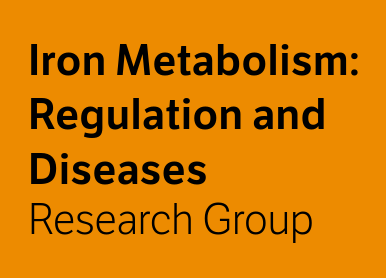ERRORS WITH ASSOCIATED CODE
EmptyFile
MEANING: The submitted file is empty.
WHEN CAN IT BE RAISED: During submission of sequence(s) in Batch Mode.
HOW TO AVOID IT: Check the submitted file and resubmit with the desired sequences to analyse.
FetchingProblem
MEANING: SIREs is unable to retrieve sequences for your search due to an issue with the external data provider.
WHEN CAN IT BE RAISED: During submission of searches in Transcript or Gene Mode.
HOW TO AVOID IT: SIREs connects to NCBI and ENSEMBL APIs to retrieve information for our computations. If these sources are experiencing overloading, undergoing maintenance or some other event, it may affect SIREs processing. In that case, be patient and retry later. If the issue persists, please contact us!
FileMissing
MEANING: You attempted to submit a search using the Batch Mode but no file was provided.
WHEN CAN IT BE RAISED: During submission of a sequence file in Batch Mode.
HOW TO AVOID IT: Make sure you attach the file before submitting the search.
FileTooLarge
MEANING: The file submitted cannot be processed because it surpasses the limit of 30Mb established to avoid the overload of the server.
WHEN CAN IT BE RAISED: During submission of sequence(s) in Batch Mode.
HOW TO AVOID IT: If your set of sequences exceedes the limit of the Batch Mode, please split your query in smaller files. Like this, we avoid overloading of the server and of the rest of services SIREs depends on.
GeneMissing
MEANING: You attempted to submit an empty search using the Gene Mode.
WHEN CAN IT BE RAISED: During submission of search in Gene Mode.
HOW TO AVOID IT: Do not rush! Make sure you typed your sequence before submitting.
InputFormat
MEANING: The sequences submitted cannot be processed because they do not match the expected FASTA format.
WHEN CAN IT BE RAISED: During submission of sequence(s) in Interactive Mode or a sequence(s) file in Batch Mode.
HOW TO AVOID IT: Make sure you input sequences in FASTA format ( >IDENTIFIER followed by sequence ). Sequences without identifier (and non-FASTA text) will cause this error, so avoid typing these in the form.
InvalidFileExtension
MEANING: The input file submitted in the Batch Mode has not an accepted file extension (different from .fa, .fasta, .FA, .FASTA, .txt or .TXT)
WHEN CAN IT BE RAISED: During submission of a sequence file in Batch Mode.
HOW TO AVOID IT: Make sure your input file has the accepted format. Even if the format of the sequences is correct, if the extension of the file is different from FASTA, it will not be processed.
InvalidCharacters
MEANING: The sequences submitted cannot be processed due to the presence of invalid characters (non A,C,G,T/U letters, numbers and other not-alphanumeric characters) in the input. A valid SIREs input should be:
>IDENTIFIER
agtctacgtac (or agucuacguac)
We accept sequences in upper or lowercase or a combination of both. If the sequence contains a combination of T and U bases, it will also be considered as valid, but is
not recommended.
WHEN CAN IT BE RAISED: During submission of sequence(s) in Interactive Mode or a sequence file in Batch Mode.
HOW TO AVOID IT: Check the error message. It will identify which characters raised the error so that they can be corrected for a resubmission.
InvalidGeneName
MEANING: You provided a Gene that was not recognized.
WHEN CAN IT BE RAISED:During submission of a gene name in the Gene Name Mode.
HOW TO AVOID IT: This mode connects to the NCBI API to fetch information for the gene provided. Although alternate names
should also be recognised, as well as Gene IDs, we recommend inputting the official Gene Name to prevent this error from occurring.
Nevertheless, for example, in the case of the human gene ALAS2:
The recommended input is ALAS2.
Still, alternative names like XLDPP will be recognised and lead to the same output.
Inputting the gene ID, 212, will also lead to the same result.
While organism selection in the Transcript Mode is not critical, a mismatch between the gene name and the organism selected in this mode will raise this error.
Make sure you write the gene name with no extra spaces between the letters. You can write it in uppercase, lowercase or a combination of both: it will not be a problem.
InvalidTranscriptID
MEANING: You provided a transcript ID of valid format, yet we could not map it to a real ID from NCBI or Ensembl.
WHEN CAN IT BE RAISED:During submission of a transcript id in Transcript Mode.
HOW TO AVOID IT: Check you typed it in correctly. Changes in nomenclature versions may affect this. Both in case of NCBI and ENSEMBL identifiers (i.e. NM_000146.3, ENST135083.2), it is better to submit the ID without the version (i.e. NM_000146, ENST135083), since it can be problematic. Try removing it and submit again.
InvalidTranscriptIDFormat
MEANING: The submitted ID was not recognized.
WHEN CAN IT BE RAISED:During submission of a transcript id in Transcript Mode.
HOW TO AVOID IT: SIREs supports queries of Entrez and Ensembl format transcripts. In the case of Entrez IDs, we support NM_ , NR_ and XM_ IDs. In the case of Ensembl, check the list of supported transcripts here. Please, stick to this format or submit your sequence of interest using the Interactive or Batch Modes..
NoSequence
MEANING: You attempted to submit an empty search using the Interactive Mode.
WHEN CAN IT BE RAISED: During submission of a search in Interactive Mode.
HOW TO AVOID IT: Do not rush! Make sure you typed your sequence before submitting.
RepeatedIdentifiers
MEANING: The sequences submitted cannot be processed due to the presence of repeated identifiers. For example:
>SequenceMouse ferritin1
GGTGCTCGACCCCTCCGACCCCCGCCGGCCGCTTCGAGCCTGAGCCCTTTGCAACTTCGT
CGTTCCGCCGCTCCAGCGTCGCCACCGCGCCTCGCCCCGCCGCCACCATGACCACCGCGT
CTCCCTCGCAAGTGCGCCAGAACTACCACCAGGACGCGGAGGCTGCCATCAACCGCCAGA
>SequenceMouse ferritin2
GGTGCTCGACCCCTCCGACCCCCGCCGGCCGCTTCGAGCCTGAGCCCTTTGCAACTTCGT
CGTTCCGCCGCTCCAGCGTCGCCACCGCGCCTCGCCCCGCCGCCACCATGACCACCGCGT
CTCCCTCGCAAGTGCGCCAGAACTACCACCAGGACGCGGAGGCTGCCATCAACCGCCAGA
These two sequences, despite having different identifiers, will be considered by SIREs as the same, because only the first word of the identifier (SequenceMouse) will be considered.
WHEN CAN IT BE RAISED: During submission of sequence(s) in Interactive Mode or a sequence file in Batch Mode.
HOW TO AVOID IT: If you want to keep the whole identifier, join the words with underscores ( _ ), hyphens ( - ) or dots ( . ):
>SequenceMouse_ferritin1
>SequenceMouse_ferritin2
Be careful when working, for instance, with Ensembl sequences. For a given transcript, the sequences of its different features (CDS, 5'UTR, 3'UTR, cDNA...) start with the transcript identifier
followed by a space and then the features. If not properly formatted, you will encounter this error.
SeqMissing
MEANING: The sequences submitted cannot be processed because the sequence is missing after the identifier.
WHEN CAN IT BE RAISED: During submission of sequence(s) in Interactive Mode or a sequence file in Batch Mode.
HOW TO AVOID IT: Check that your input does not have identifiers with no sequence associated.
SequenceTooLong
MEANING: The sequences submitted cannot be processed because they surpass the limit of 50000 residues established to avoid the overload of the Interactive Mode.
WHEN CAN IT BE RAISED: During submission of sequence(s) in Interactive Mode.
HOW TO AVOID IT: If you have a large set of sequences, you should use the Batch Mode. You will not get graphical results, but it will run faster and you will be able to resubmit up to 10 sequences of interest to the Interactive Mode for further exploration.
TranscriptMissing
MEANING: You attempted to submit an empty search using the Transcript Mode.
WHEN CAN IT BE RAISED: During submission of search in Transcript Mode.
HOW TO AVOID IT: Do not rush! Make sure you typed your sequence before submitting.

